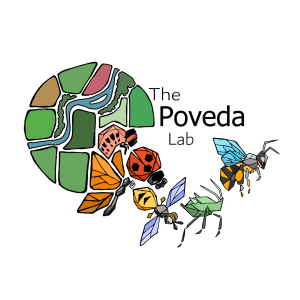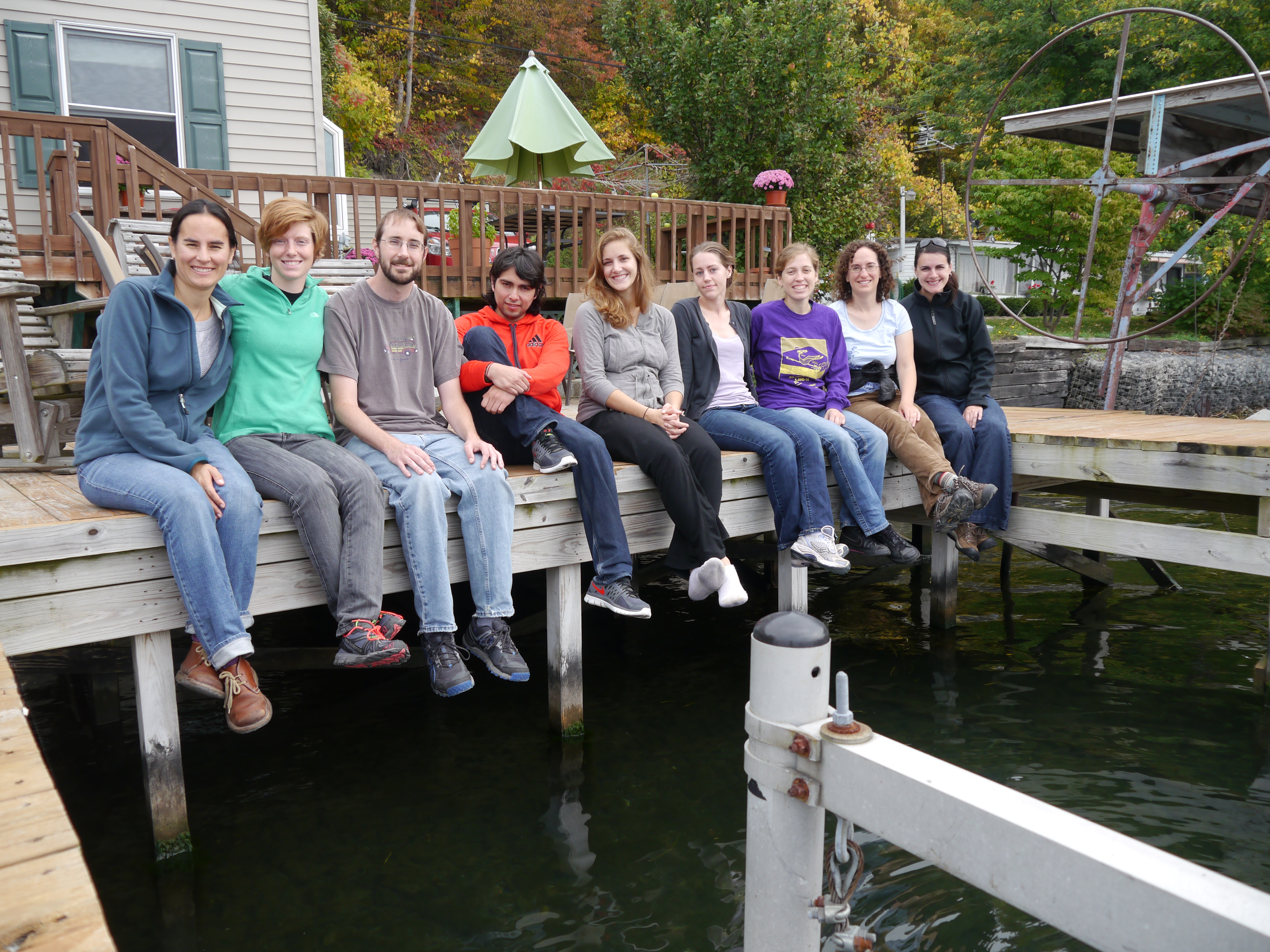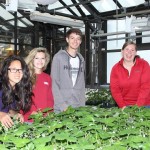This has been a very busy season for all members of the lab. We started four new exciting projects this summer and started understanding all those new great systems we are working on.
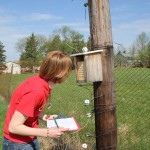 Mary kicked off the season in May looking at how diversity at the landscape scale influences mason bee (Osmia corniforns and Osmia lignaria) fitness. She is interested in investigating how pesticides present in the environment affect the bee’s fitness and is monitoring for this reason the pesticide content in the pollen and the size and number of bees that develop in nests next to 15 apple orchards in the Fingerlakes Region.
Mary kicked off the season in May looking at how diversity at the landscape scale influences mason bee (Osmia corniforns and Osmia lignaria) fitness. She is interested in investigating how pesticides present in the environment affect the bee’s fitness and is monitoring for this reason the pesticide content in the pollen and the size and number of bees that develop in nests next to 15 apple orchards in the Fingerlakes Region.
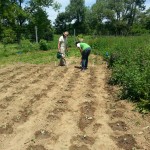 Ricardo is investigating how landscape scale diversity affects the biological control of cabbage lepidopteran pests. He is looking at the control provided by natural enemies present in the environment and complementing this natural experiment with a manipulative experiment where he releases Spined Soldier Bugs (Podisus maculiventris) in cabbage fields in 12 farms to see how the natural diversity of biological controllers interacts with the augmented bug in providing ecosystem services such as biological control and yield.
Ricardo is investigating how landscape scale diversity affects the biological control of cabbage lepidopteran pests. He is looking at the control provided by natural enemies present in the environment and complementing this natural experiment with a manipulative experiment where he releases Spined Soldier Bugs (Podisus maculiventris) in cabbage fields in 12 farms to see how the natural diversity of biological controllers interacts with the augmented bug in providing ecosystem services such as biological control and yield.
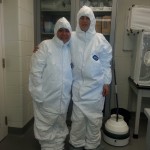 Etzel has been investigating the overcompensatory response of a Colombian potato variety in response to tuber moth damage. Since both the plant and the insect are from Colombia all her experiments are in the quarantine facility (see outfit). Her research aims at understanding the physiological mechanisms that allow the potato plants to overcompensate. In this project she is collaborating with Pavan Kumar in Georg Jander’s lab (BTI) who is investigating the genetic mechanisms of overcompensation. In addition Etzel is studying the resistance and tolerance responses of 14 different potato varieties to CPB with the aim to create a push-pull systems that can reduce damage and maintain yield through a deep knowledge of the plant’s natural responses to herbivore damage.
Etzel has been investigating the overcompensatory response of a Colombian potato variety in response to tuber moth damage. Since both the plant and the insect are from Colombia all her experiments are in the quarantine facility (see outfit). Her research aims at understanding the physiological mechanisms that allow the potato plants to overcompensate. In this project she is collaborating with Pavan Kumar in Georg Jander’s lab (BTI) who is investigating the genetic mechanisms of overcompensation. In addition Etzel is studying the resistance and tolerance responses of 14 different potato varieties to CPB with the aim to create a push-pull systems that can reduce damage and maintain yield through a deep knowledge of the plant’s natural responses to herbivore damage.
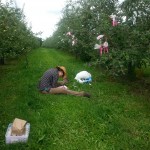 Susan was the last to start her project investigating fruit constitutive and induced resistance in different wild and domesticated apple species and varieties. Her primary goal is to understand the chemical cues that mediate resistance in fruits and to research the potential tradeoffs between apple size, and apple constitutive and induced resistance. She also aims at understanding if and how domestication has influenced those potential tradeoffs.
Susan was the last to start her project investigating fruit constitutive and induced resistance in different wild and domesticated apple species and varieties. Her primary goal is to understand the chemical cues that mediate resistance in fruits and to research the potential tradeoffs between apple size, and apple constitutive and induced resistance. She also aims at understanding if and how domestication has influenced those potential tradeoffs.
